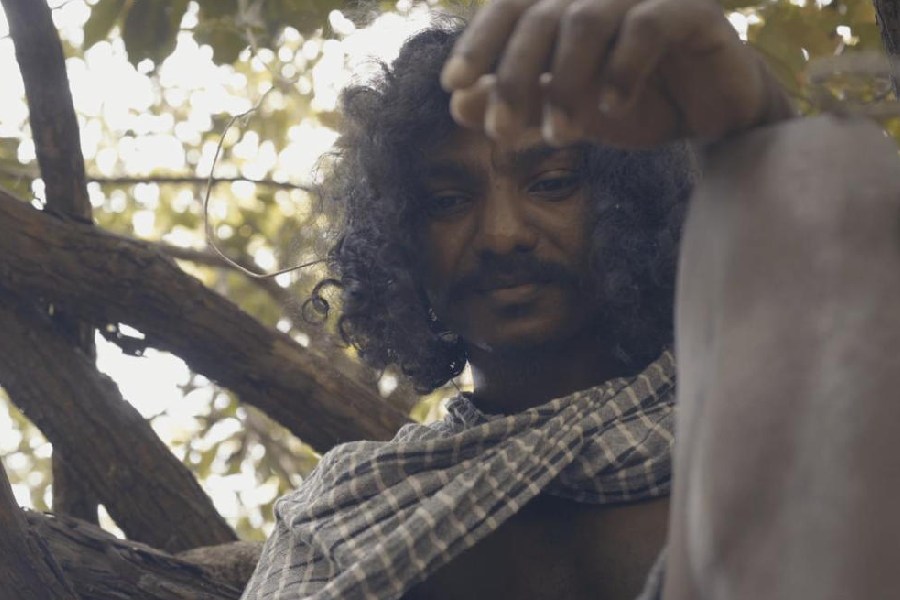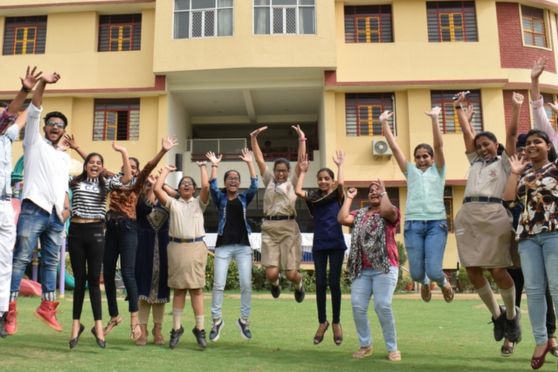The country’s only remaining cave-dwelling tribe about whom the world first got to know just over 50 years ago are the subject of a feature film in which they play the majority of roles, including the male lead.
The existence of the primitive tribe of Cholanaikkan, known as Kerala’s cave people, which has only around 400 members, was not known before the 1971 census. The tiny community has since been an enigmatic subject of research for many scholars.
Malayalam filmmaker Unnikrishnan Avala, who has been pursuing a project to film a fictional story deeply rooted in the culture and traditions of the Cholanaikkan tribe, took three years to complete the work. He is now busy with post-production to release the film to the festival circuit in June.
“It was an unbelievable experience for me and the entire crew. Starting with securing special permission from the forest department to enter and shoot in the forest, convincing the Cholanaikkan people about the film, then shortlisting about 20 of them to act and holding a weeklong training for them to understand the nuances of acting. Completing the project has been a dream-like experience,” Unnikrishnan told The Telegraph.
Titled Thantha Per, Malayalam for father’s name, the film is about the culture, traditions and family life of one of the smallest tribes in the country. Maneesh Mancheeri (native name being Vellakkariyan), a Cholanaikkan school dropout who returned to being a forest dweller, plays the male lead.
His younger brother Vinod, who continued his studies and is now pursuing his PhD, assisted Unnikrishnan in writing the script in their unnamed native dialect, which is a blend of Malayalam, Kannada and Tamil.
Niranjana, a Bachelor of Fine Arts student and an outsider, was cast as the female lead since no Cholanaikkan woman was open to any non-traditional task.
“Although they do speak Malayalam, the whole film is scripted in their dialect to keep it very original and true to their life and traditions,” he said. The film would be subtitled in Malayalam.
Not an easy project by any means, Unnikrishnan and his crew spent three years building a rapport with the Cholanaikkan people, training some of them in acting before a camera and shooting in their forest off Nilambur in Malappuram district.
The first task of Unnikrishnan and his crew comprising cameraman Mohammed A, art director Ambili Vijayan and others, was to educate the forest dwellers about what a film is.
“Only a few of them had ever watched a movie. But today all I need to say is ‘start, action’ and they will execute the shot in one or two takes,” he said.
“One of the biggest challenges that we faced during the filming was their culture itself which barred them from working under anyone. They are proud people who consider themselves superior. There is a king in each Cholanaikkan,” Unnikrishnan said.
“During the shooting, the hero told me ‘No Cholanaikkan can work under someone else’. They are such genuine people so proud of their culture,” the filmmaker recalled.
The crew camped in a rented house on the fringes of the forest and set off before dawn to trek to the forest to make use of the soft natural light from 6am to 11am after which the sunlight gets harsh. Night sequences were filmed in flame torch light for that natural tone.










